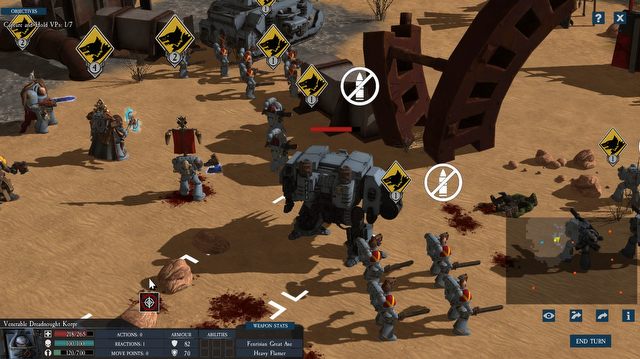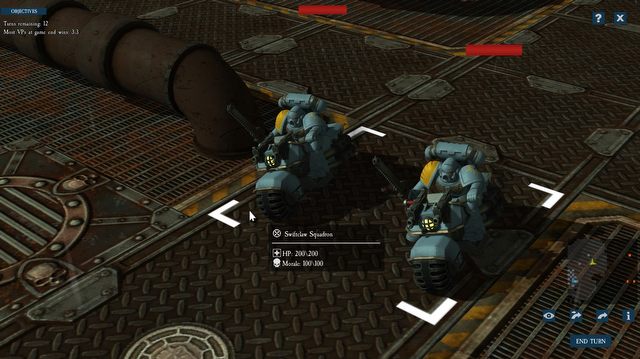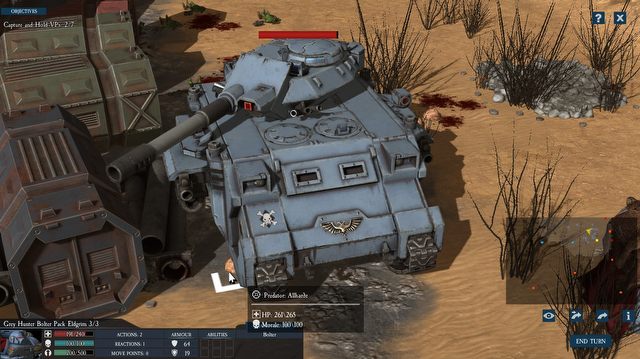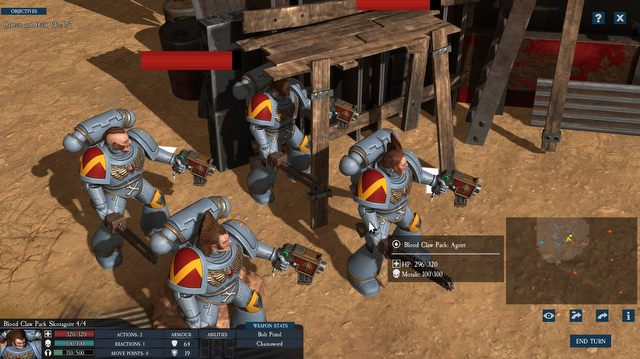Warhammer 40,000: Sanctus Reach Review – New Final Liberation?
Remember the human chess game from Harry Potter? If you've always wanted to play its Warhammer 40,000 equivalent, now is your chance, coming in the form of Sanctus Reach published by Slitherine.
The review is based on the PC version.
- Engrossing;
- Challenging and diverse battles on varied maps;
- The atmosphere of Warhammer 40,000;
- Decent graphics with references that fans will appreciate;
- Sufficient for many hours of gameplay.
- Not for everyone;
- Finicky AI;
- Technical shortcomings, stuttering animation;
- Simplistic plot.
Warhammer 40,000 is a fascinating phenomenon. The enormous, dystopian world, ravaged by eternal conflicts, is ripe with decay and decadence. The humans sacrificed their freedom of thought and belief at the altar of safety, brought to their knees by the God-Emperor. However, that’s just the beginning of the story, since the deity in question is actually the lesser evil – there are other powers at play here, eager to put their hands on mankind: the orks and the Chaos itself. We could become familiar with this world thanks to books, tabletop RPGs, and a couple of games, like the Dawn of War cycle.
The core of this universe are of course battles of figurines. Warhammer 40,000: Sanctus Reach fully embraces this part of its heritage by focusing mainly on combat. And it takes no prisoners.
Eternal war
Straylight’s game is a turn-based strategy, in which we wage battles on enclosed maps. The idea is quite simple: select troops and head into combat to teach the Greenskins some good manners. Plot? There is such a thing, however the game is rather economical with the story – still, it matches the setting well and is sure to satisfy the taste of Warhammer fans. We assume command of Space Wolves, a unit of space marines, who are doing their best to repel the ork invasion. This story is presented in an old-school way – as text briefings before missions. It’s more of an exposition than narration… and not particularly exciting, to be honest.
Familiar heroes appear on a couple of occasions during the campaign – for example the leader of the Space Wolves and his adjutants – but for casual players they will simply be “some stronger units”. So if you’re looking for even the slightest bit of engaging story as incitement for combat (because you still can remember the thrill of Disciples 2 or Jagged Alliance 2), you may encounter an obstacle – resorting to imagination will be the only solution. Fortunately, this quickly ceases to annoy.
The story in Sanctus Reach is a fun addition only for the enthusiasts of the franchise. The plot background is sometimes reflected via special objects on the map, such as a burning, shot-down transporter, whose crew managed to miraculously escape. However, the essence of the game are clashes of the heavy-armored imperials with hordes of bloodthirsty Greenskins. And this element works very well indeed. Players control infantry, vehicles, mechs and sometimes air units. The mission objectives are mostly limited to defending or conquering territory, but some diversion emerges from time to time as well. There’s no trace of Total War-ish diplomacy or economy, however – you can only hope for carnage in the name of the cause.

Warhammer 40,000 is a very complex universe with incredibly rich mythology. If you want to get familiar with the setting, you should try the fan-powered Wiki or the books describing the most important moments in the history of the world of Warhammer.
Sanctus Reach can boast a sizeable number of various units within each available formation – which is one of the ways the game employs to keep us entertained. The infantry alone consists of a variety of shooters: fighting at different ranges, using various weapons, lasers, flamethrowers, and even swords, should things require a more direct approach. Add to that the powerful commanders with their special skills that can turn the tide in your favor. Some can rally friendly units, others are able to launch area attacks or heal troops.
The battles are long (I mean it – completing certain missions can take a couple hours) and require patience, wits and planning many turns ahead. If you really mean business, you will spend a good few hours on a single session. Some battles are really difficult, but not to the point when you could feel cheated by the game; on the other hand, victories are satisfactory, and in case of defeat, it’s not very difficult to realize the critical mistakes you made.
The devil’s in the details
Sanctus Reach encourages the players to keep their soldiers alive, since with every completed mission they level up (which is probably a nod towards the RPG side of things), thus acquiring new abilities – those, in turn, come in handy in combat. Thanks to the veterancy, these faceless soldiers become… our soldiers. It soon turns out that each of them is invaluable, especially when there’s a long battle ahead of you. And the nuances only begin here.
At first glance, Sanctus Reach may seem simplistic – there you are, pushing forward and mowing enemies down like fresh spring grass. The first couple of turns may even seem uninteresting – “Where’s the grandeur?”, you might ask. “Where are the battle cries? Where’s the turmoil of epic Warhammer battles?!”. At that moment the game puts it foot down. Your troops walk into an ambush. Decimated, they have to fall back and stick to their guns until the leaders manage to patch them up – which does take a while. The real battle frenzy begins here, with occasional intervals for grief and mourning. The pacing of the campaign is great – each time, Straylight gives you enough time to bond with your troops before the main enemy strike comes. Thanks to this – perhaps even unintentionally – the effect of silence before the storm has been achieved.
As I have already mentioned, the game forces you to get your brain into high gear and make difficult calls on every step; otherwise you will not avoid serious losses. It’s mandatory to get acquainted with the specification of each unit, and think twice before choosing the lineup, especially since there’s a limited number of possible solutions. You have got to know the shape of the battlefield (which may vary greatly), predict from where the reinforcements will arrive and employ flanking maneuvers. Should you sacrifice a unit of good men to draw enemy fire while the rest slips by? This may be necessary. Same goes for using the special abilities – they are useful, but only if you use them right. If you don’t have a lot of time, or are looking for an easy win, you should be looking elsewhere, or just play short games in the skirmish mode. Sanctus Reach is addictive, but it’s not a game for everyone.
There are times when the computer really manages to convince the player that the advent of AI-dominated world is truly nigh by swiftly and economically dispatching your troops. But on other occasions, its actions seem to be inspired by the ethos of kamikaze – for example when it jovially sends its troops straight into the player’s crossfire. Shaky AI is just one technical problem this game has.
A rusty power armor
The game looks and sounds like a proper Warhammer. The units look imposing, intimidating and ominous, and the models have their distinguishing features – their armors bear emblems known to all Warhammer historians. The entire visual layer is burdened by the heavy, dusty and grim stylistics and color palette; you see that the game was developed by true fans of the universe, who had spend more than one night over the tabletop. This attention to detail is precisely what makes you emotionally attached to your units. Add to that pretty good explosions and muzzle flares, and well-designed maps: battles take place on deserts, within derelict fortresses, in toxic woodlands and among industrial ruins. The one thing that doesn’t change is the aura of degradation, rust and dust.
The stern atmosphere of battles fought until the last breath is emphasized by the music. It eventually becomes repetitive, but initially, the impression is great. The remarks and battle cries of the soldiers are also very convincing, making their own contribution to the atmosphere. In these moments, when one of the heroes calls all his comrades to let out a fierce howl – the legion’s name obliges – you may even feel goose bumps creeping up your arms.
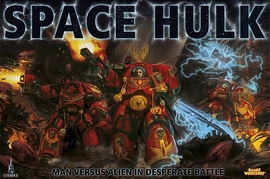
Sanctus Reach is another proof that Warhammer 40,000 is extremely prolific in the realm of video games. Both entries in the Dawn of War series are definitely worth playing. If you’re more interested in playing the part of a single marine, check out Space Hulk.
Unfortunately, optimization in Sanctus Reach won’t win any medals. Most of the time, the game runs rather smoothly, but the more units you’ve got on screen, the more likely the animation is to stutter. I’ve tested the game on two configurations, one of which was a proper gaming rig capable of running state-of-the-art productions, but the symptoms were very similar on both PCs. Let’s face it – the graphics are nice and fitting, but Sanctus Reach is no Unreal-Engine-4-powered behemoth, so there’s no justification to its devouring most of the available resources.
On top of that, the animations sometimes look sort of sluggish, and some units react with a noticeable lag to the player’s orders, generating an impression that they’re just on the verge of ignoring the player’s input and joining the forces of Horus. During brief encounters this may go unnoticed, but after a couple of hours with the game it becomes annoying. Also pretty irritating is the necessity to exit the game completely in case you don’t like the current map – it’s not possible to exit to main menu. Those are all rather minuscule shortcomings, but niggling ones, nonetheless.
It’s hard to deny Sanctus Reach a certain aura, peculiar to clashes of miniature figurines on meticulously assembled tabletop battlefields. The game is also a great distraction for all those of you who are impatiently counting the days until the release of Dawn of War III. So, if you feel like devoting your life to the Emperor and have no buddies who’d fancy a tabletop session, or you’re just not interested in collecting miniatures, you should definitely give Sanctus Reach a try. Just remember that this title can be fully appreciated only if you’re into hardcore strategies.
ABOUT THE AUTHOR
Warhammer 40,000: Sanctus Reach took me to imperial battlefields for more than 15 hours; apart from the campaign, I also tested the skirmish mode. The multiplayer wasn’t live yet before the release. I myself am only generally acquainted with the universe (especially the video games) – nonetheless I have always been fascinated by the complexity and the merciless, savage, and feral nature of this universe.
DISCLAIMER
We’ve received a copy of Warhammer 40,000: Sanctus Reach free of charge from the game’s publisher – Slitherine.
Hubert Sosnowski | Gamepressure.com

Hubert Sosnowski
He joined GRYOnline.pl in 2017, as an author of texts about games and movies. He's currently the head of the film department and the Filmomaniak.pl website. Learned how to write articles while working for the Dzika Banda portal. His texts were published on kawerna.pl, film.onet.pl, zwierciadlo.pl, and in the Polish Playboy. Has published stories in the monthly Science Fiction, Fantasy, and Horror magazine, as well as in the first volume of the Antologii Wolsung. Lives for "middle cinema" and meaty entertainment, but he won't despise any experiment or Fast and Furious. In games, looks for a good story. Loves Baldur's Gate 2, but when he sees Unreal Tournament, Doom, or a good race game, the inner child wakes up. In love with sheds and thrash metal. Since 2012, has been playing and creating live action role-playing, both within the framework of the Bialystok Larp Club Zywia, and commercial ventures in the style of Witcher School.
more
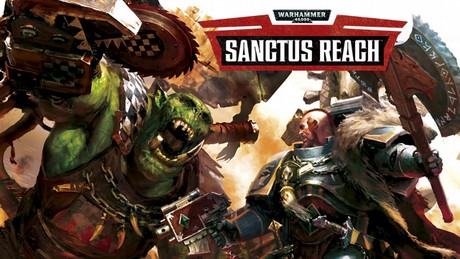
Warhammer 40,000: Sanctus Reach Review – New Final Liberation?
game review
Remember the human chess game from Harry Potter? If you've always wanted to play its Warhammer 40,000 equivalent, now is your chance, coming in the form of Sanctus Reach published by Slitherine.

Cities: Skylines 2 Review - A Revolution, 2.0, or 1.5?
game review
Cities Skylines is finally back with its sequel after a whole eight years. Part two brings sweeping, quality-of-life improvements, but has the formula stayed relevant after almost a decade?

Pikmin 4 Review: A Delightful Bloom
game review
The fourth installment of the Pikmin series comes to life in a complete package that features something for everyone. It’s the best Pikmin game yet and one you should definitely check out.

